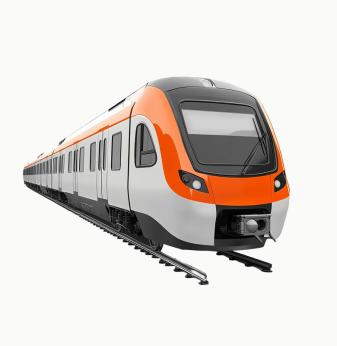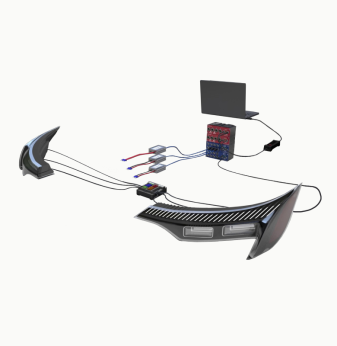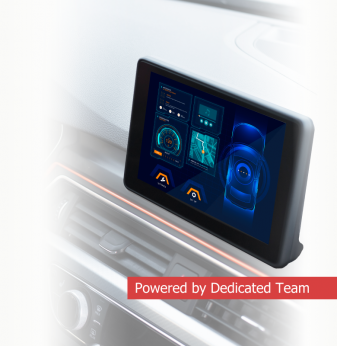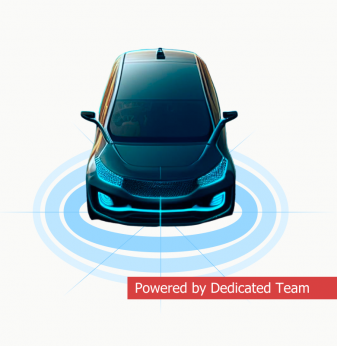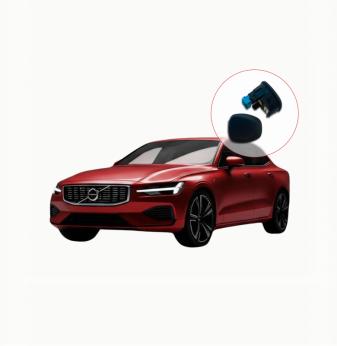How V2G, V2H, and VPP Technologies Are Transforming Energy Grids with EEBUS, OCPP, and OpenADR

Electric Vehicles Are Becoming Part of the Grid
The global electric vehicle (EV) market is accelerating fast. According to the IEA, over 14 million EVs were sold in 2023 — 18% of all new car sales. By 2030, EVs are projected to make up more than 60% of new vehicles sold in Europe, China, and North America.
As the number of EVs grows, so does their potential to act as distributed energy resources. Technologies like Vehicle-to-Grid (V2G) and Vehicle-to-Home (V2H) transform EV batteries from simple storage units into active participants in the energy grid. When combined with Virtual Power Plants (VPPs), they can help stabilize power networks, support renewable energy use, and reduce electricity costs.
Understanding V2G and V2H
Vehicle-to-Grid (V2G) enables bi-directional energy flow between an electric vehicle and the power grid. This means the vehicle can charge as usual — but also send power back to the grid during periods of high demand or when energy prices spike.
Vehicle-to-Home (V2H) focuses on home energy support. It allows EV batteries to temporarily power a residence during outages or when the grid is under pressure.
In Japan, Nissan has already enabled its Leaf EVs to power homes for up to 48 hours during outages. In California, utilities are running large-scale pilots that use EV fleets to supply energy back to the grid during peak load periods, helping avoid blackouts during heatwaves.
Virtual Power Plants (VPP): A Scalable Energy Revolution
A Virtual Power Plant (VPP) is a software-based system that aggregates distributed energy resources (DERs) — such as EVs, solar panels, home batteries, and smart appliances — and manages them as a single, flexible power asset.
BloombergNEF projects that by 2030, the world will have over 250 GW of flexible distributed capacity. If just 10% of the EVs in the EU were to participate in VPPs via V2G, that would provide more than 25 GW of flexible energy — comparable to 20 nuclear reactors. Utilities and grid operators see VPPs as an efficient alternative to building new power plants.
To make this vision a reality, EVs must seamlessly connect with VPPs — which requires robust communication protocols and standardized integration.

Key Communication Protocols: OCPP, OpenADR, EEBUS
OCPP – Open Charge Point Protocol
OCPP is the industry-standard protocol for communication between EV charging stations and backend systems. Developed by the Open Charge Alliance, its current version — OCPP 2.0.1 — supports:
- Bi-directional charging for V2G
- Load balancing and smart charging
- Enhanced security and Plug & Charge (ISO 15118) integration
Today, over 80% of global EV chargers use OCPP, making it the most widely adopted standard for EV infrastructure.
OpenADR – Open Automated Demand Response
Originally developed in the U.S., OpenADR is an open standard for automated demand-side energy management. It allows grid operators to send real-time signals to devices — including EV chargers — to adjust power consumption or return energy to the grid.
Benefits include automated peak load reduction, dynamic energy pricing response, and hands-off operation with no manual user intervention. Utilities in California have deployed OpenADR across thousands of sites to help prevent grid overloads.
EEBUS – Smart Home and Grid Integration
EEBUS is a European communication standard for connecting all energy-relevant devices in homes and buildings — EVs, solar inverters, heat pumps, appliances, and energy management systems.
It enables cross-device communication in building energy networks, coordinated energy usage between EVs, HVAC systems, and battery storage, and interoperability via IP-based communication.
Comparison of V2G Communication Protocols
Below is a summary of the most relevant communication standards supporting V2G integration:
- OCPP: Global, supports EVSE-backend communication, bi-directional energy flow, remote control of charging
- OpenADR: US-focused, automates demand response between utilities and devices
- EEBUS: EU-developed, enables integration of EVs into smart buildings and energy systems
Each plays a distinct but complementary role in making energy-flexible environments a reality.
Technical Challenges — and How Promwad Solves Them
Hardware Compatibility
Not all EVs and chargers support V2G — they require hardware-level support for ISO 15118 and bi-directional power conversion.
Promwad develops custom embedded systems and firmware for onboard units and EVSE with full V2G support, integrating charge controllers, power electronics, and communication interfaces.
Cybersecurity
As V2G and VPP-enabled systems connect to critical energy infrastructure, data privacy and protection become essential.
We provide end-to-end TLS encryption, hardware security modules (HSM, TPM), and compliance with standards such as IEC 62443, ISO 21434, and UN R155 for secure automotive and energy applications.
Real-Time VPP Integration
EVs must respond in real time to signals from grid operators while considering user behavior, battery levels, and dynamic tariffs.
Promwad builds edge devices and protocol gateways that link OpenADR, OCPP, and EEBUS. Our team also develops predictive algorithms for energy availability and embedded Linux or RTOS-based firmware for real-time response.
Real Projects and Pilots Around the Globe
- Nuvve + EDF (France): Corporate EV fleet using V2G generates up to €500 in annual savings per vehicle
- Netze BW (Germany): 100 EEBUS-compatible chargers coordinate charging based on real-time grid demand
- Nordic countries: V2H systems enable off-grid operation of homes and cabins using dynamic weather-based energy switching
Why It Matters for Product Makers and Energy Innovators
Transitioning to smart energy infrastructure depends on today's hardware and software platforms. Device makers, microcontroller suppliers, EMS vendors, and IoT integrators need experienced engineering partners to:
- Implement protocols like OCPP, OpenADR, and EEBUS
- Design embedded software with real-time performance and security
- Develop PCBs, RF-compliant hardware, and modular architectures
- Ensure V2G/V2H functionality in chargers, gateways, or control systems
Promwad offers:
- Embedded systems for EV charging and building energy management
- Hardware design for energy gateways, inverters, and BMS
- Conformance testing and protocol stack integration
- Engineering support for IEC 61850, IEC 61851, and ISO 15118 environments
The Future Is Plugged In
V2G, V2H, and VPP technologies are no longer futuristic experiments — they are practical components of modern energy infrastructure. With open standards like EEBUS, OCPP, and OpenADR, energy systems can become smarter, more resilient, and better integrated with user behavior and renewable sources.
Governments and utilities in the EU and the U.S. are investing heavily in this shift. Product developers now have an opportunity to become key enablers of tomorrow’s clean, connected grid.
Ready to Power the Future?
If you're building energy devices, EVSE infrastructure, or grid software and want to integrate V2G, V2H, or VPP technologies — Promwad is ready to help.
Contact our engineering team to learn how we can support your product development with end-to-end hardware and software engineering.

